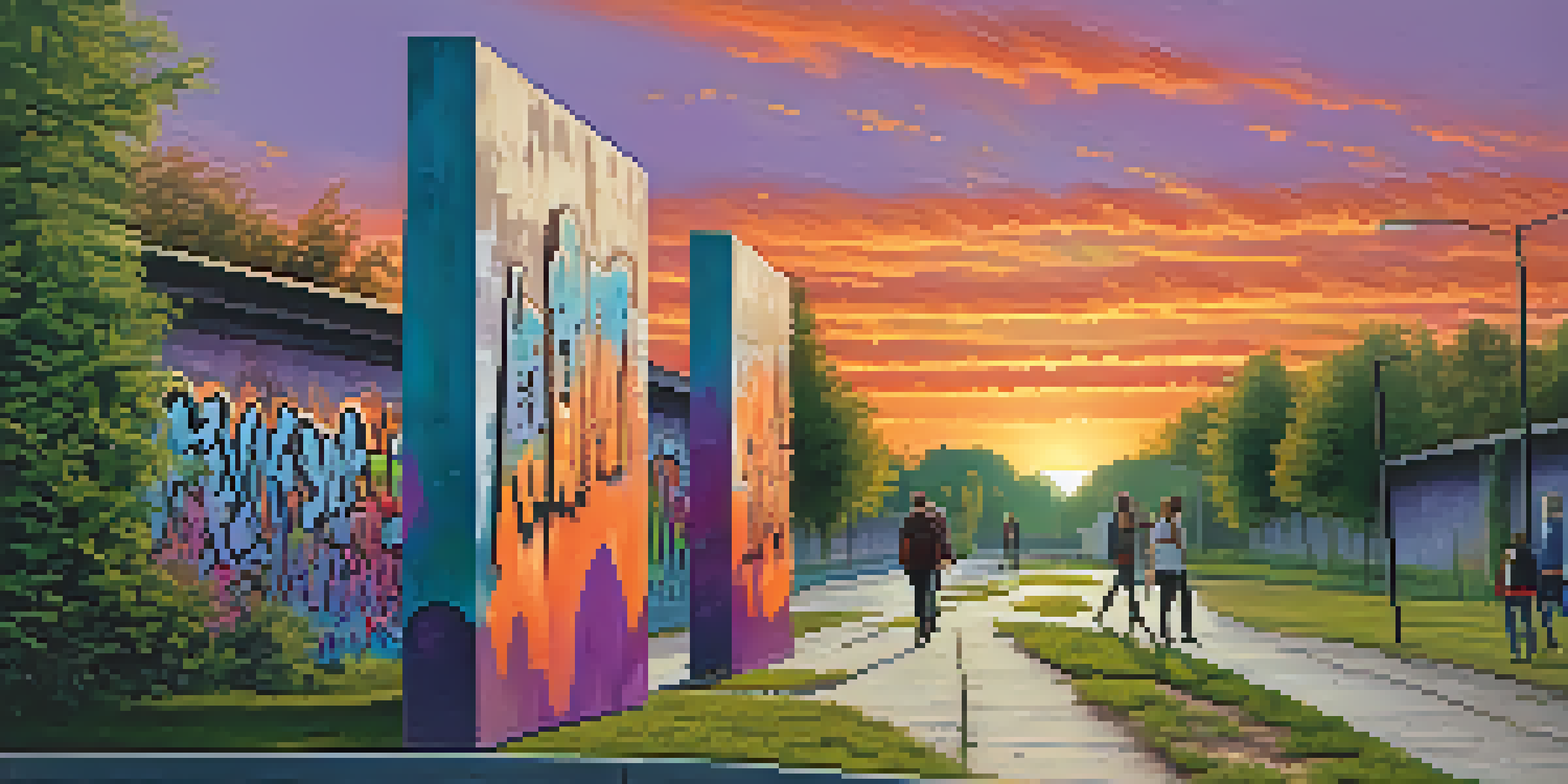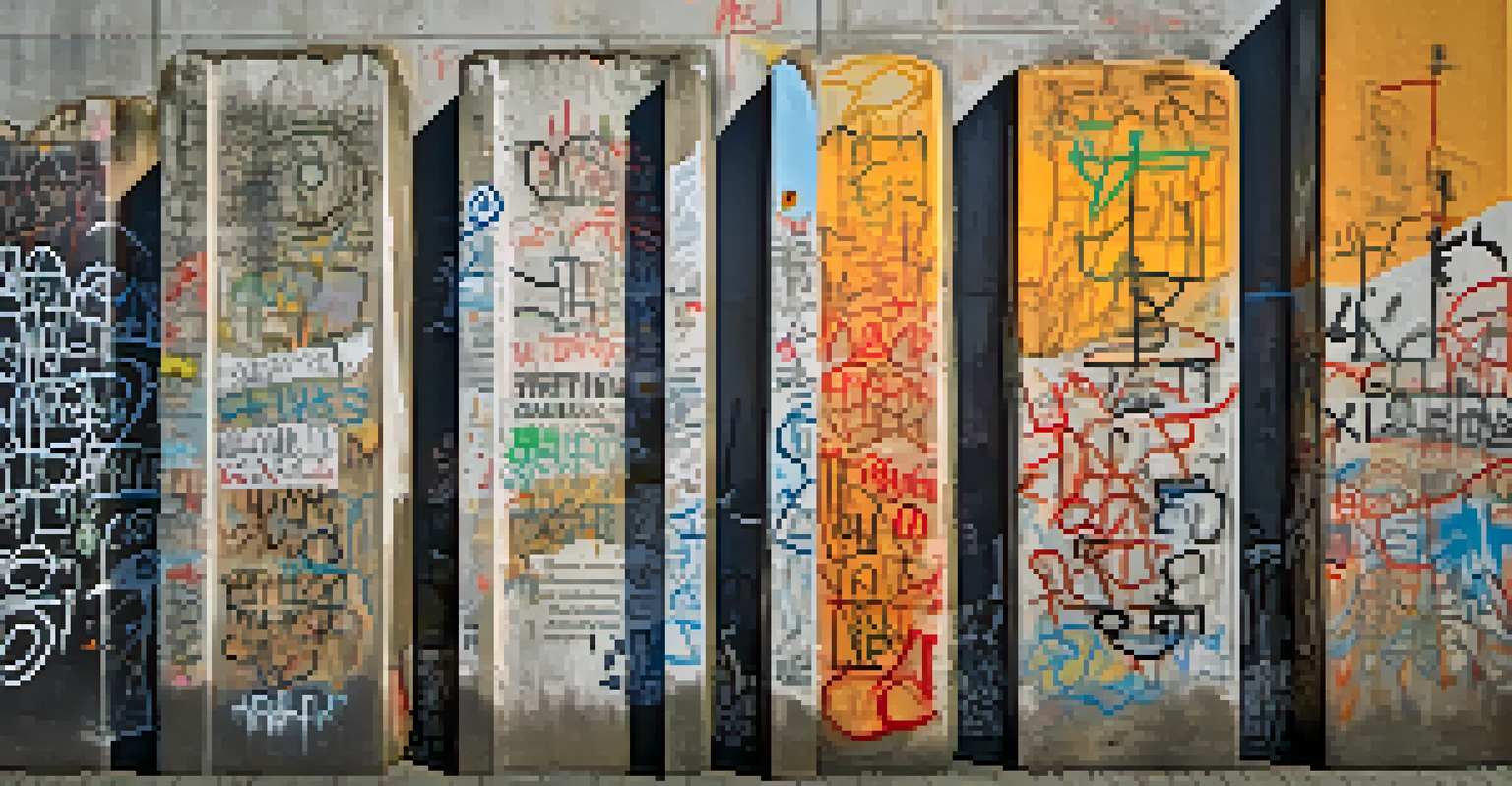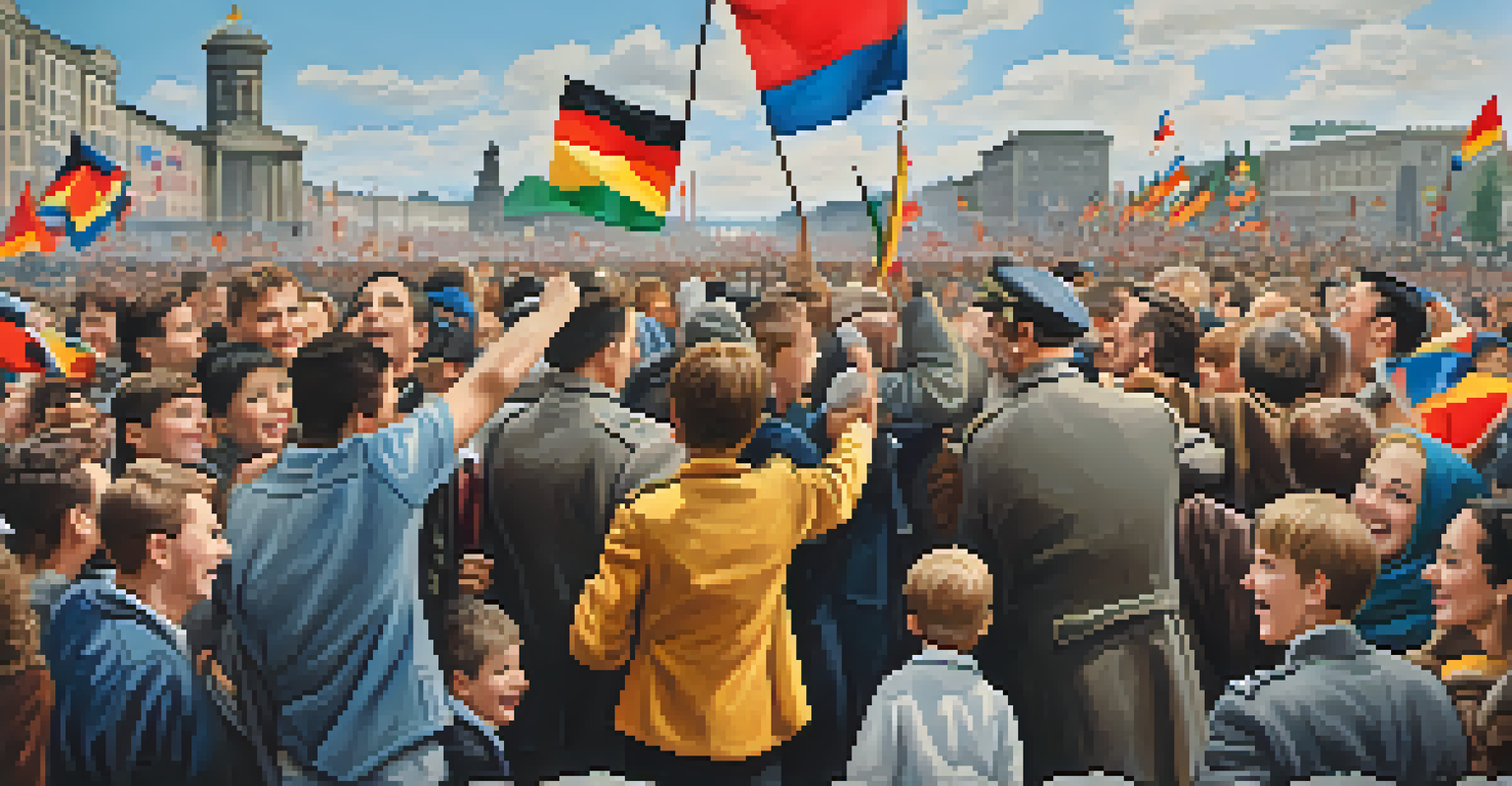The Berlin Wall: A Symbol of Division and Historic Change

The Birth of the Berlin Wall: A Divided City
The Berlin Wall was erected on August 13, 1961, separating East and West Berlin. This monumental structure emerged during the Cold War, a period marked by geopolitical tensions between the capitalist West and the communist East. Families were torn apart overnight, illustrating how a simple wall could radically change lives and communities. The Wall quickly became a potent symbol of the ideological divide that characterized the era.
The Wall was a very powerful symbol of the division of Europe and the world at that time, and it became a symbol of the struggle for freedom.
The initial purpose of the Wall was to prevent East Germans from fleeing to the West, which they saw as a land of opportunity. In fact, within a year of its construction, thousands attempted to escape, risking their lives for freedom. The stark contrast between the two sides of the city only deepened as West Berlin flourished while East Berlin struggled under a repressive regime. This division created a palpable tension felt by citizens on both sides.
Over the years, the Wall not only divided a city but also represented the broader struggle between democratic freedoms and authoritarian control. It became a physical reminder of the stark differences in lifestyle, culture, and political beliefs. The Wall's existence prompted international debates and spurred movements advocating for human rights and freedom across the globe.
Life in the Shadow of the Wall: Daily Realities
For those living near the Berlin Wall, everyday life was a blend of fear and hope. East Berliners were restricted from accessing the West, leading to a pervasive sense of isolation. Families and friends were often separated for decades, with many resorting to desperate measures to reunite. The stories of these attempts to cross the Wall are both heartbreaking and courageous.

Life in East Berlin was marked by government surveillance and limited freedoms, contrasting sharply with the vibrant, open society of West Berlin. The Wall's presence was a constant reminder of the oppressive regime in the East, where basic rights were often denied. Meanwhile, West Berlin thrived as a cultural hub, attracting artists, musicians, and thinkers who sought refuge from the East's restrictions.
The Wall Divided Lives and Communities
The Berlin Wall not only separated East and West Berlin but also tore families apart and created a profound sense of isolation.
Despite the hardships, creativity flourished in the shadow of the Wall. Graffiti artists turned the Wall into a canvas, expressing their desires for freedom and unity. This art became a powerful symbol of resistance and hope, showcasing the indomitable spirit of those who longed for change.
The Fall of the Berlin Wall: A Historic Turning Point
On November 9, 1989, the Berlin Wall fell, marking a significant turning point in history. The event was not just a local phenomenon; it symbolized the collapse of communist regimes across Eastern Europe. The fall was fueled by years of protests and growing demands for freedom from East German citizens, who finally saw their voices being heard.
The fall of the Berlin Wall was a moment of hope for a world that had been trapped in the grip of division.
As news of the Wall's opening spread, thousands flocked to the checkpoints, celebrating their newfound freedom. The emotions were overwhelming—joy, disbelief, and relief filled the air as families reunited after years of separation. This moment not only dismantled the physical barrier but also ignited a wave of optimism that resonated throughout the world.
The fall of the Berlin Wall initiated a series of events that led to the reunification of Germany and the eventual dissolution of the Soviet Union. It was a powerful reminder that even the most formidable obstacles could be overcome through collective action and the desire for change. The world watched in awe as a divided nation began to heal.
The Legacy of the Berlin Wall: Lessons Learned
The legacy of the Berlin Wall continues to shape discussions about freedom and human rights today. It serves as a stark reminder of the consequences of division, not just in Berlin but globally. The Wall's history encourages us to reflect on the importance of unity and the dangers of authoritarianism, especially in contemporary times.
Educational initiatives and memorials commemorate the Wall's impact, ensuring that future generations understand its significance. Museums and exhibits showcase the stories of those who lived through its tumultuous years, providing valuable insights into the human experience. These efforts highlight the enduring spirit of resilience and the quest for freedom.
The Fall Marked a Historic Change
The fall of the Berlin Wall on November 9, 1989, symbolized the collapse of communist regimes in Eastern Europe and sparked a wave of optimism for freedom and unity.
Moreover, the Wall's legacy inspires ongoing dialogue about the importance of empathy and understanding in an increasingly polarized world. As we navigate contemporary challenges, the lessons from the Berlin Wall remind us to strive for a more connected and inclusive future, where division has no place.
Cultural Representations: The Wall in Art and Media
The Berlin Wall has been a profound source of inspiration for artists, filmmakers, and writers across the globe. Its powerful symbolism has been depicted in various forms of art, from poignant murals to award-winning films. These cultural representations help keep the memory of the Wall alive, allowing audiences to engage with its historical significance.
One notable example is the film 'Good Bye Lenin!' which explores the impact of the Wall on personal relationships and identity. This blend of humor and poignancy captures the complexities of life in a divided Berlin, resonating with audiences far beyond Germany. Such works encourage viewers to reflect on the themes of loss, resilience, and the human spirit.
Music has also played a role in the Wall's cultural legacy, with songs like 'Wind of Change' by the Scorpions becoming anthems of hope and unity. These artistic expressions not only commemorate the Wall but also inspire future generations to continue advocating for freedom and understanding, reminding us that art has the power to transcend borders.
Touring the Remnants: Visiting the Berlin Wall Today
Today, remnants of the Berlin Wall serve as a powerful reminder of the past, drawing millions of visitors each year. Iconic sites like the East Side Gallery, where artists transformed a section of the Wall into vibrant murals, offer a glimpse into the creativity born from adversity. These locations invite tourists to connect with history and reflect on the lessons learned.
Visiting the Berlin Wall is not just about observing a historical monument; it's an opportunity to engage with the narratives surrounding it. Guided tours often recount personal stories of escape and resilience, allowing visitors to better understand the human experiences tied to the Wall's existence. This immersive approach fosters empathy and connection.
Legacy of the Wall Inspires Reflection
The legacy of the Berlin Wall serves as a reminder of the importance of unity and understanding in addressing modern divisions around the world.
In addition to the East Side Gallery, the Berlin Wall Memorial provides educational resources that illuminate the Wall's history. Interactive exhibits and preserved sections of the Wall encourage reflection on its significance, ensuring that the lessons of division and unity continue to resonate with future generations.
Reflections on Division: Modern Implications of the Wall
As we reflect on the Berlin Wall, it's crucial to consider its implications in today's world. While the Wall has fallen, divisions still exist in various forms, whether political, social, or economic. The lessons learned from the Wall's history remind us of the importance of dialogue and understanding in bridging these divides.
In many places, barriers—both literal and metaphorical—continue to separate communities. From border walls to social inequalities, the challenges are complex and require collective action to address. The spirit of resilience demonstrated by those affected by the Berlin Wall serves as an inspiration for modern movements advocating for unity and justice.

Ultimately, the story of the Berlin Wall is not just about a physical structure; it's about the human experience and our ability to overcome obstacles. As we face contemporary challenges, the Wall's legacy encourages us to strive for a future where understanding and compassion prevail over division.